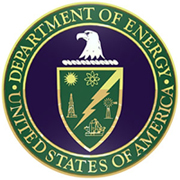 Lilian Marrero (Civil Engineering) About DOE Fellow
Lilian graduated from Florida International University with a Bachelor’s of Science in civil engineering in the spring of 2011. As an undergraduate Research Assistant for NASA’s Water Science of Coupled Aquatic Processes and Ecosystems from Space (WaterSCAPES), her focus was in assessing the impact of sea level rise (SLR) within South Florida. She was a keynote speaker at the Association of Environmental Engineering and Science Professors (AEESP) 2011 conference for her research in forecasting the impacts of sea level rise on salt water intrusion in the Biscayne Aquifer. During her past internship at NASA’s Goddard Space Flight Center (GSFC), she performed an assessment of water level fluctuations for the Chesapeake Bay using MIKE 21 HD FM via a variety of hydrodynamic simulations. Simulations results were compared to existing data from the National Oceanic & Atmospheric Administration (NOAA) and satellite data (ICESat). Additional projects included assistance in peat soil characterization for specific sites within the Everglades National Park (ENP), and a literature review for the Sian Ka’an Biosphere in Mexico. The fall of 2011 marks the beginning of her Master’s of Science in civil engineering with a concentration in water resources engineering. Her interests include water modeling, hydraulic engineering, hydraulic structures, open channel flow resistance, computational fluid dynamics, turbulence modeling, hurricane storm surges and philanthropic projects. For the last three years, Lilian Marrero has been working as a civil engineer at MWH Global.
|
DOE Related Projects
An estimated 2.4 million pounds of elemental mercury were released into the East Fork Poplar Creek (EFPC) watershed in Oak Ridge, Tennessee. The Applied Research Center (ARC) at Florida International University (FIU), in collaboration with the Department of Energy (DOE), has developed a numerical model for the site using MIKE 11 with the purpose of forecasting mercury transport and contamination within the watershed. As indicated by previous studies, eighty-five percent of the mercury currently being released into the watershed results from stream sediments contaminated by pore water. Throughout the past year, a sediment transport module was created for the site by other researchers. The next project phase would be to improve the modeling interactions of suspended sediment within the module.
Upon joining the DOE Fellows Class of 2011, Lilian began working under the supervision of Dr. Georgio Tachiev on improving the modeling of mercury and suspended sediments for the watershed. The purpose is to effectively and accurately forecast mercury transport and contamination within the watershed to best identify remediation processes.

